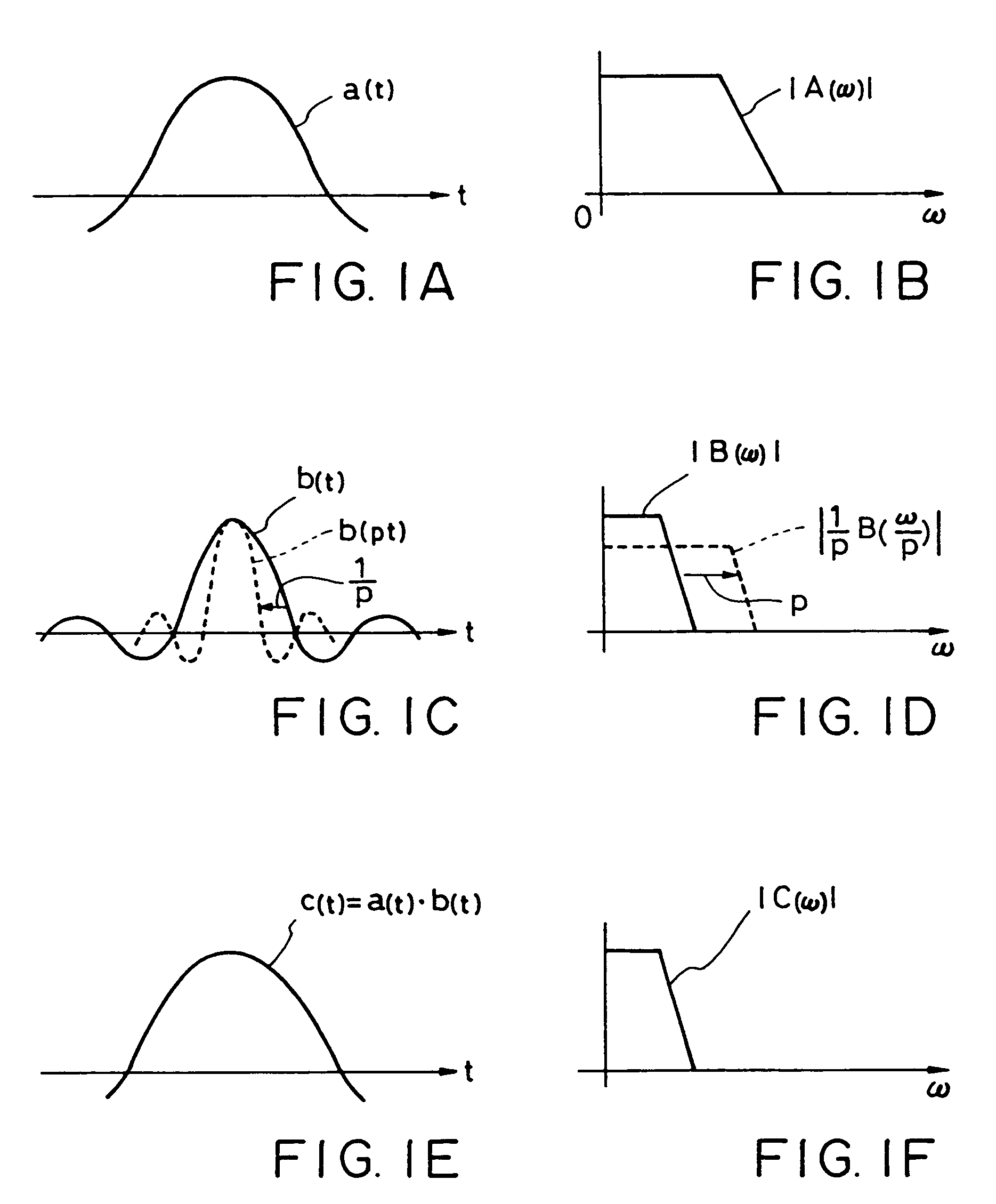Filter coefficient setting technique for variable filtering process and variable sampling frequency conversion
a filter coefficient and variable filtering technology, applied in the field of filter coefficient setting method and sampling frequency conversion method, can solve the problems of aliasing noise, unwelcome aliasing noise, and difficulty in realizing filters that can appropriately meet such requirements, and achieve the effect of enhancing the performance of the sampling frequency converter devi
- Summary
- Abstract
- Description
- Claims
- Application Information
AI Technical Summary
Benefits of technology
Problems solved by technology
Method used
Image
Examples
Embodiment Construction
[0042]FIG. 2 is a block diagram showing an exemplary setup of a sampling frequency converter device in accordance with a preferred embodiment of the present invention. As shown, the convertor device comprises a filter 11, an interpolation filter 12, a coefficient memory 13 and a coefficient interpolating section 14.
[0043]Like the filter 1 mentioned earlier in relation to FIG. 10, the filter 11 preceding the interpolation filter 12 operates to previously eliminate, from input digital signals of sampling frequency f1, high-frequency components (high-frequency signals) so as to prevent unwanted aliasing noise. In the present embodiment, the filter 11 is in the form of a FIR (Finite-duration Impulse-Response) filter that comprises delay circuits D, D, . . . , multipliers M, M, . . . and an adder ADD, although the filter 11 may be constructed in any other manner. Although not specifically shown, the filter 11 includes a variable-gain amplifier at its output end. Like the interpolation fi...
PUM
 Login to View More
Login to View More Abstract
Description
Claims
Application Information
 Login to View More
Login to View More - R&D
- Intellectual Property
- Life Sciences
- Materials
- Tech Scout
- Unparalleled Data Quality
- Higher Quality Content
- 60% Fewer Hallucinations
Browse by: Latest US Patents, China's latest patents, Technical Efficacy Thesaurus, Application Domain, Technology Topic, Popular Technical Reports.
© 2025 PatSnap. All rights reserved.Legal|Privacy policy|Modern Slavery Act Transparency Statement|Sitemap|About US| Contact US: help@patsnap.com



